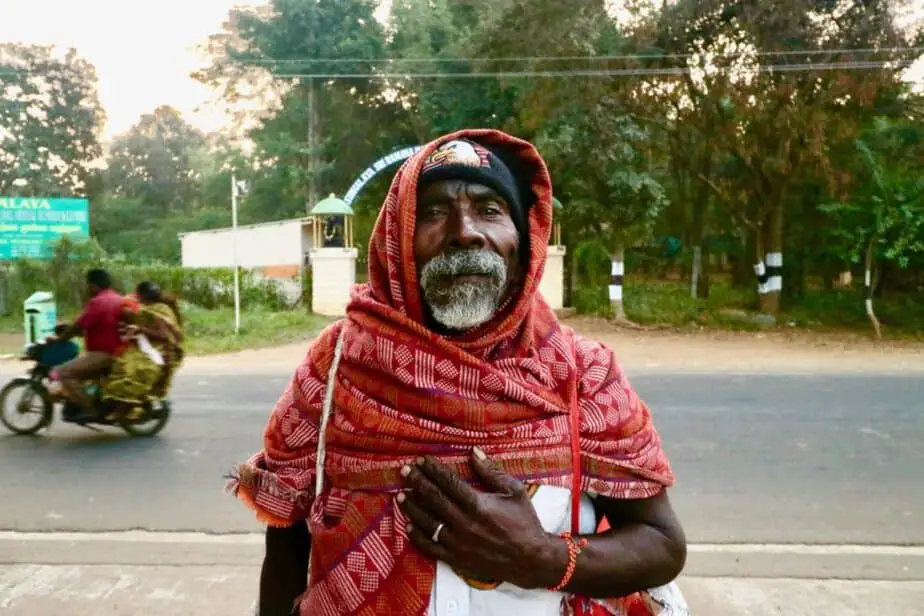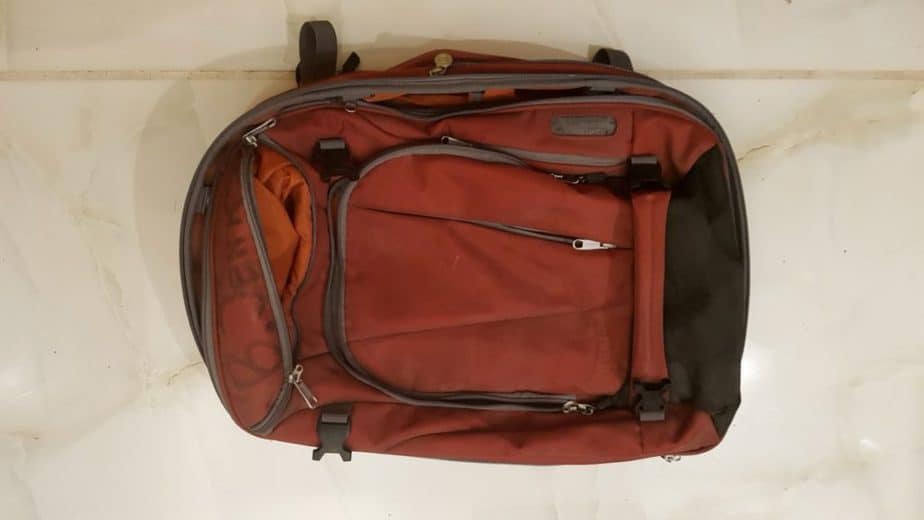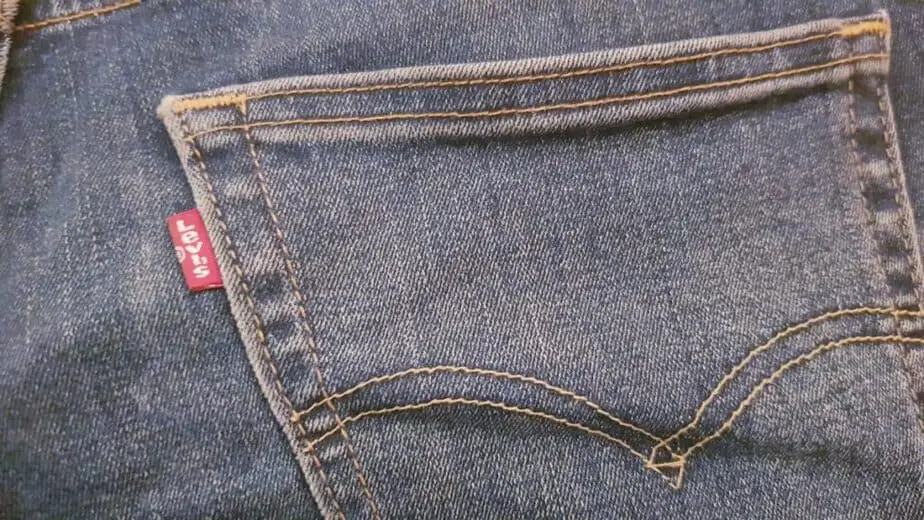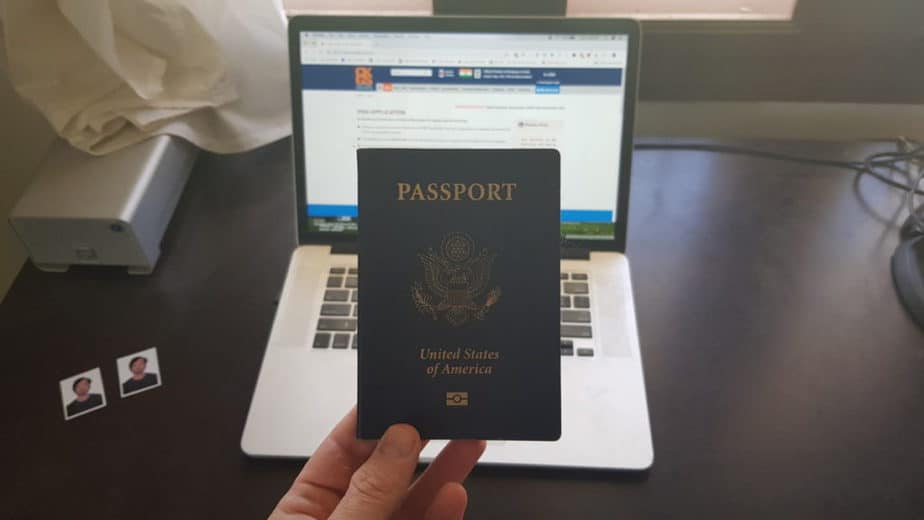I spent many hours figuring out what I should take for my trip to India. I knew I could find some items there, but I also knew I didn’t want to be stuck without an important item… Through trial and error, I came up with this Packing Checklist for Men (PDF here that you could download to your phone)…
I spent three weeks traveling in South India on my first trip. Then on my second trip, I sold my belongings, packed two bags and headed out for an extended trip. Now I’m renting a home not far from Chenna.
In that process, I had to make a lot of decisions about what to take and what to leave. I didn’t always make the right choice either and I did get stuck without some essential items.
But through that process, here is what I have found are the right things to pack for many people. Of course, you may have your own essentials or have learned some tips in your own travels and there are some great things you will bring that I haven’t thought of yet.
The main things to consider when packing for India is…
For my packing list for men AND women + free PDF, check out the updated post.
What Are You Doing in India?

India is such a big diverse country that you can’t pack for every situation. Instead, what are you specifically doing there and what will you need?
If you’re going trekking in the Himalayas, your packing list is going to be much different than if you’re going to nap on the beaches of Goa.
If you’re going to start a business in Mumbai, your packing list is not going to resemble if you’re going on a yoga retreat in a spiritual destination like Tiruvannamalai.
I was going for a spiritual retreat on my first trip and wanting to do street photography. On my second trip when I moved here, I knew I was going to be working full-time online.
With those goals in mind, I then considered the weather of my destination.
Read more: Essential items for India travel (not a generic common sense list). This is what I use after 4 years of traveling India
What is the Weather like in Your Destination?

India has six different seasons and dozens of microclimates.
In addition to summer, fall, winter, and spring… India also has a monsoon season called Varsha (June through August) and a pre-winter season called Hamanta (November and December).
Pack for the weather in your region, not for every season.
Spring (February through March)
In many places throughout India, the weather during these months is very pleasant and mild. It’s a good time to visit Central and North India.
It’s also a great time to visit South India, although the temperatures are starting to get hot. The average high temperature in Chennai is getting close to 90 F and the low is 71 F.
Summer (March through May)
The summers in India are blazingly hot. In South India, the temperature in May was over 105 F most days.
Summer is a great time to visit North India. In mountainous places in North India like Ladakh, the summers range between the high-60s and mid-80s.
Monsoon (June through August)
During these months, it rains heavily throughout much of India.
My friend in Goa says it can rain for over a month straight. It is common for it to rain a number of hours each day.
Mumbai and Kolkata are the cities that receive the most rain. Bangalore, Delhi, and Hyderabad receive much less rain and Chennai doesn’t receive much rain at all. The desert state of Rajasthan, the eastern side of the Western Ghats mountain range, and Ladakh in far north India also do not receive much rain.
Where I live in South India, it has rained a few times and they can be heavy rains. However, it is still relatively dry where I live.
It can be nice to travel to India at this time because it is less crowded and the rates are cheaper.
Autumn (August thru October)
In most of India, the weather is less hot and there are many celebrations. The Hindu festivals of Navaratri, Vijayadashami, and Sharad Purnima are the most popular.
Pre-Winter (November and December)
This is a great time to visit many places in India.
The weather is hot during the day but cool at night. You can comfortably wear jeans and a long-sleeved button-up shirt all day. At night, you would want a blanket to stay warm.
Winter (January and December)
This is the most popular time to visit India.
You can see snow in North India. In South India, it’s like the summer where I’m from in the USA. It’s hot in the day and cool at night. You could wear shorts most days and be appropriately dressed for the weather.
Read more: Can Guys Wear Shorts in India?
The Ultimate Men’s Packing List for a Trip To India
If you’re going on a month-long trip to India, here is what you can pack. I created a PDF you can download here and put on your phone.
Backpack
- Checked Bag: I use the Mother Lode Weekender by eBags.
- Daypack: Patagonia Black Hole 25L
- Packable Daypack
Clothes
- Merino Wool T-Shirts: Woolly Ultralight Breathable Wicking T-shirts
- Button-up Long-Sleeved Shirt
- Jeans: Levi’s
- Hiking Pants: Rei
- Cotton Shorts
- Swimsuit/Active shorts
- Travel underwear: Ex Offico Boxer. Uniqlo Airism Boxers.
- Socks: SmartWool thin. SmartWool thick.
- Sweater: Hoodie.
Technology
- Mobile Phone: Samsung Galaxy Note
- Laptop: MacBook Pro
- Travel Adaptor: Ceptics India
- Travel Converter: Bestek
- DSLR Camera: Canon 80D
- Travel Tripod: Gorillapod. Manfrotto Compact Action Aluminum 5-Section Tripod.
- Action Camera: GoPro
- Instant Camera: Instax
Medications
- Charcoal Tablets
- Grapefruit Seed Extract
- Anti-diarrhea pills
- Electrolytes tablets
- Melatonin tablets
Paperwork
- Visa
- Passport
- Drivers License
- International Drivers Permit
- Flight Itinerary
- Hotel Reservations
Footwear
- Sandals: Chacos
- Thongs
- Boots or Tennis Shoes
Miscellaneous
- Microfiber Towel
- Ear Plugs
- Eye Mask
- Journal
- Sunglasses
- USB Stick
- Headlamp
- Electric Razor
- ExpressVPN
- ATM Cards
- Credit Card
- Evernote/GDrive: Put copies of all your important docs on here
- Audible Books
For the Truly Prepared:
- Malaria Pills
- Water Filter
- LifeStraw Water Bottle
- Steripen
- Hat
- Sleeping Bag & Liner
- Medical Kit
- Travel Alarm Clock
- Mosquito Repellent – Bring Deet spray, they don’t have in India
What You Do NOT Need to Bring:
I wasn’t sure what all I needed and what I could buy in India, so here’s what I wish I would have NOT brought and either just bought in India or went without.
- Warm Jacket: Wasn’t needed in South India.
- Rain Jacket: Wasn’t needed in South India. I’ve been in South India for 7 months and it’s rained less than 10 times.
- Pain Reliever: Buy at a local pharmacy.
- Malaria Pills: Mosquitos can be bad outside but the odds are so low for me these wouldn’t be worth it.
- Wipes: Buy in local store
- Toilet Paper: Buy in local store
- Sunscreen: Buy in local store
- Shampoo: Buy in local store
- Hand Sanitizer: Buy in local store
- Wireless Headphones: Do not bring. I had nice Skull Candy Crush headphones that didn’t survive the journey. I mostly just used earbuds anyways.
- Scarf: Can buy in India.
- Kurta: This is a loose-fitting shirt common in India
- Backpack Lock: I brought but never used. If I was taking trains, this would be useful
Breakdown of my Gear:

Backpack: Backpack or Rolling Suitcase?
Rolling suitcases would be helpful in the airport, but wouldn’t be much help on most Indian roads and sidewalks.
I prefer a backpack and I like the Mother Lode Weekender by eBags. It has pockets for my MacBook Pro and I carried all my camera gear in it safely. It has a lot of compartments and straps that I can keep everything secure. It also has a QR code that allows me to track it if it gets lost.
The backpack is relatively comfortable to wear, however, is not as comfortable as a hiking-style backpack.
One downside is that it was too heavy to bring as a carry-on on my way back from India, although I have often carried it on. Since it had all of my camera gear, I had wished it was a little smaller to ensure it would be a carry-on. However, that’s more on me for packing too much!
Overall I’m really happy with it.
Backpack: Daypack

I like the Patagonia Black Hole 25L. I chose this model because it is water resistant and almost waterproof. Sometimes I’ll be working at a coffee shop and it starts raining. I don’t want to have to wait to go home and now that it is monsoon here in India, this is very helpful.
The protective outer layer also keeps out the dust.
The size is perfect and I use it by itself for my weeklong visa run trips.
It has a pocket for my laptop and a lot of essential pockets for digital nomad types.
Backpack: Packable Daypack
I brought a light packable daypack that you can stuff down into a small pocket. Then you unfold it and can pack your gear for the day.
This was adequate for multi-hour usage as I went out and took photographs. I could carry a water bottle and my camera and some snacks.
This would be good for a month-long trip or if space is a big issue.
The downside of this is that the quality is thin and it’s not that supportive. Had I continued to use it with my camera gear, it seemed like it would rip relatively soon and didn’t properly protect my camera equipment.
I prefer the Patagonia Black Hole 25L pack and think it is worth the extra weight.
Clothes

I used to lead 2-week hiking trips on the Appalachian Trail in the USA, and I love to pack as little as possible.
For some people, they’ll want to take a shirt or underwear for every day, whereas I like to buy high-quality travel gear that I can wash in a few minutes in my sink, hang up to dry, and by morning it’s clean and ready for wear.
If you’re a minimalist like me, then here’s what has been more than enough for me. If not this should get you started…
2 Merino Wool T-shirts
Two shirts was more than enough for a month-long trip. I could have went with only one and been completely fine. I love the Woolly crew neck shirts (check the price on Amazon here). Now I have three total.
What’s perfect about Merino wool is it is a natural fiber that has the benefits of technical hiking gear, yet it doesn’t feel like technical gear. I can wear it out to a nice restaurant or in the city and I feel good.
Merino wool is breathable, so even when it’s hot you feel cool and it doesn’t get sopping wet with sweat.
It is antibacterial, so I can wear a shirt for 3 to 5 days at a time, in the heat, and it doesn’t stink like sweat. I don’t know how they accomplish this feat but it is a miracle and so helpful for a guy who wants to spend as little time washing my clothes as possible… yet I still feel great and clean and presentable when meeting people.
Button-up Long-Sleeved Shirt
One movie that will inspire you to go to India is the Namesake (2006), and a leading character says, “The rickshaw drivers in India dress better than the college professors in America do.” Haha.
Everyone wears button-up shirts and slacks here, even when it’s so hot you could cook an egg on the sidewalk. Indians take a lot of pride in their appearance and in general, take a conservative approach to their clothing selections.
Also in temples, there is often a dress code that will require you to cover your shoulders and arms and your knees.
Therefore, bring a light button-up long-sleeved shirt. I just have one I found at Old Navy, so it’s nothing special. I can wear it often in the winter and is all I need to stay warm in South India. I can also wear it if I want to look less like a tourist 🙂
Jeans

Before coming to India, I knew they wore long pants even in the summer here, so I wanted to find the absolute best pair of travel pants that I could.
I wanted something that was light in my suitcase, breathable, yet would look good if I went out in the city.
After researching for hours and even buying some and returning them, I settled on Levi’s jeans though.
If I wanted to spent twice or four times the price I could have gotten a better pair, however, I like the fit of Levi’s and now they add stretchy spandex so they are very comfortable to wear.
They are NOT as breathable as technical pants so when it’s very hot I do not wear them, yet when I do wear them out or to meet friends, I feel appropriately dressed and like I fit right in.
Hiking Pants
Often I will wear REI hiking pants. They no longer sell the model I wear but they have some other good options.
These are NOT super technical hiking-looking cargo pants or zip-off pants. They are slim fitting and comfortable, and I would often wear them in Austin, Texas too where I used to live.
Cotton Shorts and a Swimsuit
I have a basic pair of cotton/linen shorts that are often what I wear during the summer. These do the job and are adequate for going out to eat at a local restaurant or going to the grocery store or wearing around my house.
I also have a swimsuit/running shorts that I wear if I’m washing my shorts or to switch it up.
Both of these selections are nothing special but stuff you could buy at a simple store like Old Navy.
3 Pairs of Travel Underwear
I have two brands I’m really happy with, that let me travel very light.
ExOfficio Boxer are highly recommended as travel underwear. I would pour a little shampoo on them in my sink at night. Suds them up. Then rinse and hang. By morning, they are clean and fresh and ready for wear.
They are sturdily constructed and after 2 years of wear still work great. Highly recommended product. On my first trip to India, I brought two and would alternate them. If I was being super minimal, I could have went with only one.
Uniqlo Airism Boxers if you’re on a budget these are also very good travel underwear. You can wear and wash these in the same fashion as the Ex Offico boxers, and by morning they are ready for more wear.
The price is more reasonable on these underwear. The downside is that while I have not had problems with them after 7 months of wear, they do feel as sturdily constructed as the ExOfficio Boxers.
I’m being nitpicky though since in performance they have performed as well as the more expensive ExOfficio boxers. If you were going on a month to three-month trip, these would perform really well for you.
2 Pairs of Hiking Socks
I first brought one pair of SmartWool thin crew hiking socks. I also brought one SmartWool heavyweight hiking socks.
SmartWool socks have performed for me for years. I wore them on year-long backpacking trips where I would wear them every day, wash them at night, and they would be ready to go the next day. They are also antibacterial so if I didn’t wash them, they were still relatively fresh and able to be used.
You don’t actually need socks if you’re living in India though. I haven’t worn socks in months.
If you are going to be hiking and sightseeing and wearing boots or tennis shoes, you obviously want some and SmartWool socks are the great.
Sweater
I once invested a couple of hundred dollars in a cashmere hooded sweater and I love it. I would wear it every day as I worked from home or in coffee shops. It is so soft and comfortable and similar to the antibacterial fabric mentioned above doesn’t smell or seem to get dirty. I could hand wash it once a month or more and it would be fine.
Of course, I brought my favorite possession on my trip to India and in the wintertime, it is very handy to use in the morning. When I was riding a scooter to go shoot photographs as the sun came up, this keeps the chill off. Since there are NOT really blankets here, it would also keep me warm in the middle of the night in some hotels.
You don’t need a hoodie like this, but I would recommend bringing your favorite hoodie.
It is also helpful for travel since the air conditioning in some airports and flights can be chilly.
Technology

I work full-time at an online company, so I need my tools to make a living. I also like to write and photograph and make videos for my Youtube channel with India Travel Tips, and there is so much inspiration in India.
Before my first trip, I stocked up on travel gear so I could make a video about a spiritual retreat for a friend. I was also inspired by the local holy men so I would drink chai with them and take photos and videos as the sun came up.
Mobile Phone
Bring an unlocked GSM phone that you can stick a local SIM card in. Here’s how I use my American cell phone in India.
I sold my iPhone and got rid of my AT&T contract before coming because it would have cost me too much money to unlock it (I would have had to pay off the remaining balance on my contract).
Instead, I spent $500 on an unlocked GSM Samsung Galaxy Note that I found on Amazon.
Now I spent ~$3 a month on a cell phone bill, and I use it constantly and never run out of data.
Travel Adaptor and Travel Converter
The electricity grid in India is different so you will need a travel adaptor. The grid tends to surge so you could lose a device if you don’t have a surge protector. If you want to be extra safe, you can bring a travel converter.
I use all three of these tools and can work hassle-free and sleep sounding knowing my MacBook won’t get fried.
Here are all the details about how to choose a good travel adaptor for India. And it will help you decide if you need a travel converter.
DSLR Camera
I actually do NOT recommend you bring one, unless you really really want to shoot high-quality photos or videos (like me).
I only use my Canon 80D when I’m shooting street photos or shooting a video for a Youtube project. But I actually rarely take it out because carrying such a big camera is kind of a hassle and it draws attention.
I shoot a lot more photos with my phone. If I had a good point-and-shoot camera that I could stick in my pocket, that would be ideal.
Travel Tripod
I made a video of a spiritual retreat for a friend and I needed a light tripod though. This was an unpaid project, so my budget was small, yet I found a Manfrotto travel tripod (check the price on Amazon) and have been very happy with it. It is NOT professional quality but it’s also at entry-level prices so I am very content.
It is light enough I could slip in my luggage or in my daypack and off I go.
I also use a Gorillapod, which is very handy and light.
Other Cameras
GoPro: I wear my GoPro on my head sometimes as I’m experimenting with street photography POV videos, and besides feeling like a moron, I do like the quality. It’s fun to wear them on a scooter ride too.
Instax Camera: I brought this so I could give a gift to a local kid if I take their photograph as I shoot street photography. It’s beautiful to watch their face light up when you give it to them. One local friend watched as a photo of his young kid slowly developed in his hand and said, “It’s like magic” with a big smile. This is a highly recommended gift to bring from the USA to India, and if you want other ideas here are 35 more.
Medications
The dreaded Delhi Belly might get you, haha. Here are some medicines that are highly recommended:
- Charcoal Tablets (check price on Amazon): Take this as soon as you get diarrhea, and it will help… um, solidify the situation.
- Grapefruit Seed Extract (check price on Amazon): This is full of antioxidants but more importantly is also used to heal your stomach if you get diarrhea. I recommend the liquid concentrate even though the taste is less than delicious.
- Melatonin (check price on Amazon): India is on the opposite side of the world and jet lag can be pretty gnarly. Take one of these before bed to help you sleep as you adjust.
- Electrolyte tablets: If you get diarrhea you can easily get dehydrated, so this will help you stay strong and healthy.
- Imodium: Nuff said.
Paperwork

Hotels and mobile phone providers might want to see your essential documents so bring 3 paper copies of these:
- Passport
- Visa
- Driver’s License
- Airline Itinerary
- Hotel Reservations
- International Driver’s Permit, if you want to legally drive in India (Do you need a license to drive a scooter in India?)
In addition to bringing paper copies, I recommend you keep digital copies on:
- A USB Stick
- GDrive or Evernote or your cloud backup solution of choice
I’m not too excited about something weird happening and not having a passport or visa and having to explain that to India’s immigration officials. Doesn’t sound like a blast 😉
Footwear
Bring high-quality shoes or sandals. Do NOT skimp and only bring $10 beach thongs, and think that will do. The streets are interesting so protecting your feet will go a LONG way to helping you enjoy your trip.
- Sandals: I wear Chacos (check price on Amazon) and love them. I can hike in them, ride my scooter in them, or do my grocery shopping. I wear them everywhere and pretty much only wear them. They are so sturdy and I can see them lasting for years to come.
- Thongs: Bring to wear in the shower or hotel room. The only downside to Chacos is that many stores require you to take off your shoes before entering. It’s not a huge deal but being able to easily slip off thongs would be a touch easier.
- Tennis Shoes: I bought some here to workout in, but I did NOT bring any when I traveled. If you are going on tours and on your feet all day you would want them.
- Boots: I brought my boots for hiking, yet I never use them anymore. I wish I would have left them at home now. If I was trekking in the Himalayas though they might come in handy.
Miscellaneous
- Microfiber Towel: I wasn’t always given a towel at the $15 a night I stayed in so this was helpful.
- Ear Plugs: Honking your horn in India is polite. At 5 am the temples play a call to chant. There are a lot of dogs who enjoy barking. And it is one of the most populated countries in the world. A MUST!
- Eye Mask
- Journal: I have a nice Moleskine and I still look back on my first impressions of India.
- Sunglasses: Not only do they protect you from the sun, but they also will protect you from dust.
- Headlamp: There are power cuts, and this can be helpful.
- Electric Razor
- ExpressVPN: I use this when I use Wifi in restaurants and coffee shops to add a layer of security.
- ATM Cards: I use Radius Bank because they refund my ATM fees and do NOT charge them. I only pay a 1% foreign transaction fee, so I pay about $1.50 to withdraw $150. With Bank of America, I was paying $12.50 to withdraw $150. Here’s how you can avoid ATM fees when traveling India.
- Credit Card: I use Discover Card because they do NOT charge a foreign transaction fee.
- Audible Books: I listened the David Foster Wallace’s 1100+ page novel, Infinite Jest when I couldn’t sleep. Worked like a charm.
For the Truly Prepared:
- Malaria Pills: I am not a doctor so this is just my personal experience and opinion, please do what makes you feel safe. I did not bring them because I was NOT exposed to many mosquitos. I lived in a hotel and now a house, I wore mosquito spray and while they were around some, they weren’t a big deal. The odds were very low I would be affected. If I was camping or volunteering for months in an area where I would be exposed to many mosquitos, I would have taken them since people do die every year from malaria. It is mostly people in small villages who spend their whole lives outside and sleep without mosquito nets. If you want to prevent mosquito bites in India, here’s what I have learned.
- Water Filter, LifeStraw Water Bottle, Steripen: These tools could help you safely drink the tap water. I am always close to water bottles and have filtered water on tap at my house, so I have NOT needed these.
- Hat: I need one. I actually do NOT spend a ton of time outside because it has been very warm and I am working a lot. I could use a cool straw hat though if you have any suggestions.
- Sleeping bag & Liner: If you are taking a sleeper train ride, this would be helpful. It would be also helpful if you are sleeping in a lot of hotels and want your own bedding.
- Medical Kit
- Travel Alarm Clock: I use my phone, but sometimes it would be nice to have a backup if my phone dies.


